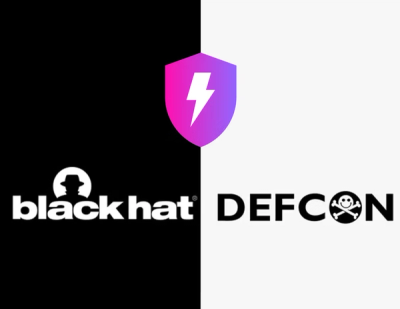
Research
/Security News
Contagious Interview Campaign Escalates With 67 Malicious npm Packages and New Malware Loader
North Korean threat actors deploy 67 malicious npm packages using the newly discovered XORIndex malware loader.
This library is available on pypi as pywebpush.
Source is available on github.
Please note: This library was designated as a Critical Project by PyPi, it is currently
maintained by a single person. I still accept PRs and Issues, but
make of that what you will.
To work with this repo locally, you'll need to run python -m venv venv.
Then venv/bin/pip install --editable .
In the browser, the promise handler for registration.pushManager.subscribe() returns a PushSubscription object. This object has a .toJSON() method that will return a JSON object that contains all the info we need to encrypt and push data.
As illustration, a subscription_info object may look like:
{
"endpoint": "https://updates.push.services.mozilla.com/push/v1/gAA...",
"keys": { "auth": "k8J...", "p256dh": "BOr..." }
}
How you send the PushSubscription data to your backend, store it referenced to the user who requested it, and recall it when there's a new push subscription update is left as an exercise for the reader.
webpush() One CallIn many cases, your code will be sending a single message to many recipients. There's a "One Call" function which will make things easier.
from pywebpush import webpush
webpush(subscription_info,
data,
vapid_private_key="Private Key or File Path[1]",
vapid_claims={"sub": "mailto:YourEmailAddress"})
This will encode data, add the appropriate VAPID auth headers if required and send it to the push server identified
in the subscription_info block.
subscription_info - The dict of the subscription info (described above).
data - can be any serial content (string, bit array, serialized JSON, etc), but be sure that your receiving
application is able to parse and understand it. (e.g. data = "Mary had a little lamb.")
content_type - specifies the form of Encryption to use, either 'aes128gcm' or the deprecated 'aesgcm'. NOTE that
not all User Agents can decrypt 'aesgcm', so the library defaults to the RFC 8188 standard form.
vapid_claims - a dict containing the VAPID claims required for authorization (See
py_vapid for more details). If aud is not specified,
pywebpush will attempt to auto-fill from the endpoint. If exp is not specified or set in the past, it will be set
to 12 hours from now. In both cases, the passed dict will be mutated after the call.
vapid_private_key - Either a path to a VAPID EC2 private key PEM file, or a string containing the DER representation.
(See py_vapid for more details.) The private_key may be
a base64 encoded DER formatted private key, or the path to an OpenSSL exported private key file.
e.g. the output of:
openssl ecparam -name prime256v1 -genkey -noout -out private_key.pem
from pywebpush import webpush, WebPushException
try:
webpush(
subscription_info={
"endpoint": "https://push.example.com/v1/12345",
"keys": {
"p256dh": "0123abcde...",
"auth": "abc123..."
}},
data="Mary had a little lamb, with a nice mint jelly",
vapid_private_key="path/to/vapid_private.pem",
vapid_claims={
"sub": "mailto:YourNameHere@example.org",
}
)
except WebPushException as ex:
print("I'm sorry, Dave, but I can't do that: {}", repr(ex))
# Mozilla returns additional information in the body of the response.
if ex.response is not None and ex.response.json():
extra = ex.response.json()
print("Remote service replied with a {}:{}, {}",
extra.code,
extra.errno,
extra.message
)
If you expect to resend to the same recipient, or have more needs than just sending data quickly, you
can pass just wp = WebPusher(subscription_info). This will return a WebPusher object.
The following methods are available:
.send(data, headers={}, ttl=0, gcm_key="", reg_id="", content_encoding="aes128gcm", curl=False, timeout=None)Send the data using additional parameters. On error, returns a WebPushException
data Binary string of data to send
headers A dict containing any additional headers to send
ttl Message Time To Live on Push Server waiting for the client to reconnect (in seconds)
gcm_key Google Cloud Messaging key (if using the older GCM push system) This is the API key obtained from the Google Developer Console.
reg_id Google Cloud Messaging registration ID (will be extracted from endpoint if not specified)
content_encoding ECE content encoding type (defaults to "aes128gcm")
curl Do not execute the POST, but return as a curl command. This will write the encrypted content to a local file
named encrpypted.data. This command is meant to be used for debugging purposes.
timeout timeout for requests POST query. See requests documentation.
to send from Chrome using the old GCM mode:
WebPusher(subscription_info).send(data, headers, ttl, gcm_key)
.encode(data, content_encoding="aes128gcm")Encode the data for future use. On error, returns a WebPushException
data Binary string of data to send
content_encoding ECE content encoding type (defaults to "aes128gcm")
Note This will return a NoData exception if the data is not present or empty. It is completely
valid to send a WebPush notification with no data, but encoding is a no-op in that case. Best not
to call it if you don't have data.
encoded_data = WebPush(subscription_info).encode(data)
If you're not really into coding your own solution, there's also a "stand-alone" pywebpush command in the
./bin directory.
This uses two files:
subscribe method and looks something like:{
"endpoint": "https://push...",
"keys": {
"auth": "ab01...",
"p256dh": "aa02..."
}
}
If you're interested in just testing your applications WebPush interface, you could use the Command Line:
./bin/pywebpush --data stuff_to_send.data --info subscription.info
which will encrypt and send the contents of stuff_to_send.data.
See ./bin/pywebpush --help for available commands and options.
FAQs
WebPush publication library
We found that pywebpush demonstrated a healthy version release cadence and project activity because the last version was released less than a year ago. It has 1 open source maintainer collaborating on the project.
Did you know?

Socket for GitHub automatically highlights issues in each pull request and monitors the health of all your open source dependencies. Discover the contents of your packages and block harmful activity before you install or update your dependencies.

Research
/Security News
North Korean threat actors deploy 67 malicious npm packages using the newly discovered XORIndex malware loader.

Security News
Meet Socket at Black Hat & DEF CON 2025 for 1:1s, insider security talks at Allegiant Stadium, and a private dinner with top minds in software supply chain security.

Security News
CAI is a new open source AI framework that automates penetration testing tasks like scanning and exploitation up to 3,600× faster than humans.